- Boating Techniques
- The Ultimate Pre-Departure Checklist For Boating

The Ultimate Pre-Departure Checklist for Boating

In some ways, boating is simple. If you have any boating experience, you can head to the water and start enjoying yourself without much prep work. But it also pays to be prepared – both for your safety and overall enjoyment.
That’s why we put together this “ultimate” checklist, which you can review before even short departures.
Why Is a Checklist Valuable?
Checklists are a convenient way to standardize the process of checking your boat and yourself before departing on the water. You can run down the list, item by item, and be confident that you’re not forgetting anything. Even if you develop a routine, it’s all too easy to forget about something you need – and once you’re on the water, it’s too late.
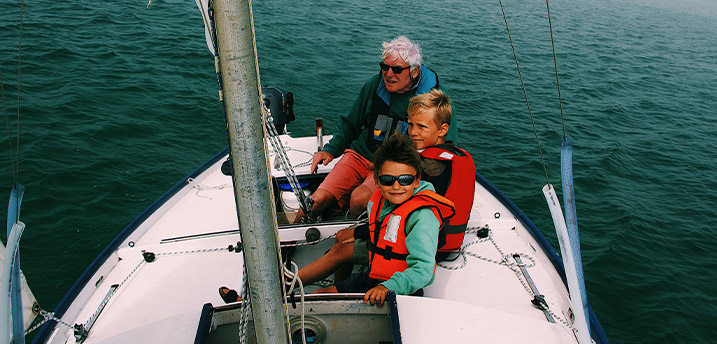
The Weather
Before departing, take the time to check the weather and see if it’s still acceptable to head out. If it looks like a storm is coming in a few hours, or if the forecast is uncertain, this is your chance to bail. If you’re experienced and the weather doesn’t look too bad, this could be a good chance to take other preventative measures – like securing the boat or bringing additional safety equipment.
Next, take a look at yourself. Are you adequately prepared with everything you personally need for this journey?
- Licensing and other paperwork. Do you have all the licenses, forms, and paperwork you need to venture out to sea? For example, you may need a captain’s license to operate a boat , depending on where you live. You may also need a fishing license or other regulatory approvals, depending on what you’re doing and where you’re doing it.
- Proper clothing. Make sure you’re dressed appropriately for the weather. Solid, reliable footwear is a must, and if the winds are strong or the air is cool, you’ll definitely want to bring some extra external layers.
Run through the various systems and components of your boat to ensure they’re in full working order, such as:
- Lights. Are all relevant lights on your boat working properly?
- Fuel. Do you have ample fuel to get you to and from your ultimate destination, plus some extra?
- Oil and coolant. Are your oil and coolant levels acceptable?
- Tools and spare parts. Do you have a box of common marine tools and spare parts in case something breaks down during your journey?
- Ventilation and odours. Is your boat sufficiently ventilated? Do you notice any abnormal smells that could clue you into a fuel leak or other problem?
- Bilges and pumps. Are your bilges clear, with pumps working properly?
- The battery. Is the battery in full working condition and on a full charge?
- The anchor. Is your anchor attached and functioning properly?
- Rope and dock lines. Do you have plenty of extra rope and dock lines in case you need them?
Personal Safety
Next, you’ll need to check to ensure you have all the personal safety equipment you need to keep you and your passengers as safe as possible during this voyage.
- Lifejackets. Make sure you have at least one lifejacket for each person on board – and in the appropriate sizes for each passenger. You’ll also want to ensure that each lifejacket is working properly and has a whistle attached.
- Throwing devices. Lifejackets are helpful, but they may not be enough to rescue someone who has fallen overboard. Make sure you have additional throwable floatation devices available to help people get back on board.
- Radio. Next, check the radio. This is your emergency lifeline, and a source of information if you need one. Ensure it’s working properly and that you have backup batteries to allow it to work independently.
- Flares. Flares and other signalling devices are essential if you’re stranded and in need of help. Make sure you have adequate coverage here.
- Flashlight and batteries. Bring a flashlight and some extra batteries in case you need them.
- Fire extinguisher. Just because you’re on the water doesn’t mean fire isn’t a major hazard. Check to ensure your fire extinguisher is ready to be used.
- Emergency rations and water. Make sure there’s plenty of water for everyone onboard – as well as some emergency rations of food in case you’re stranded.
Other Optional Items
There are also some optional items you may want to bring with you on your journey:
- Specific equipment. There are dozens, if not hundreds of fun hobbies you can enjoy with a boat, and some of them require specific equipment. For example, if you’re going fishing, you’ll need to bring rods, tackle, and bait, among other things. Because there are so many hobbies, each with their own requirements, it’s impossible to be comprehensive here; be sure to bring your own sub-checklist for each of these activities.
- Food and beverages. Consider bringing some food and beverages for a picnic-style meal – especially if you’re going to be on the water for most of the day.
- Charging cables. Bring some extra charging cables so your digital devices can remain charged throughout your experience.
- Entertainment. You may also want to bring a source of entertainment for while you’re on board, such as a portable audio speaker or a book.
Overview with Passengers
Finally, it’s a good idea to explore topics of safety and boat operation with your passengers. Make sure they know where all your safety equipment is located and how to operate the radio in case of an emergency. Spending just a few minutes before departure could equip them with the knowledge they need to get you out of a dangerous situation.
Boating is much more enjoyable when you have a vessel you love. That’s why it’s so important to shop online when searching for your next boat – you’ll gain access to thousands of new and used vessels from all around the world, so you can find exactly what you’re looking for. At TheYachtMarket, that’s exactly what we offer – so check out our selection of boats for sale today!
Share this article
You might like.

Sign up to our newsletter
By submitting this form, you agree to our Privacy & Cookie Policy
Change units of measure
This feature requires cookies to be enabled on your browser.
Show price in:
Show lengths, beam and draft in:
Show displacement or weight in:
Show capacity or volume in:
Show speed in:
Show distance in:


Before You Set Sail: The Pre-Departure Sailing Plan

Why should you, as a sailor, think you can just hop on your boat and go, when you may encounter a myriad of issues as soon as you cast off that first line and the first wave slaps against your hull on your way to that horizon?
Pilots have their checklists. Astronauts have their countdown. Even ballplayers have their pre-game rituals before they take the field. Sailors should have a pre-departure plan too.
The Pre Departure checklist is one of the most important parts of voyage planning and day sailing alike. Because once you leave the dock and set sail, there is little you can do if you don’t bring it with you.
A sailboat is an entirely off-grid floating life support system. But who among us hasn’t forgotten the limes or left the socket set on the tailgate of the car at one point?
Table of contents
Pre-Departure Plan
A pre-departure plan will alleviate a great deal of the forgetfulness factor, if you take the time to do it and allow your brain to plan the more interesting details of the voyage like, “what will we make for dessert on the fourth night?” This is where planning really starts to make sense.
Your Sailboat
The first thing you should address in your pre-departure plan is your boat. You want a boat that is reliable and sound. One that will not just get you there and back, but also protect you and your crew against a limitless assortment of trouble that is possible at any moment while at sea. Depending on the length of your voyage and the time since your last voyage, this can be a simple check of the systems or a full how’s-your-father of the inner workings of the vessel.
Working from the top down, you’ll want to get a good understanding of everything from the mast head to the keel bulb. When I am entering a new boat, I walk the boat stem to stern, trying to eye any issues that may creep up like a missing split ring, a worn halyard, a fraying fore stay. A cursory examination of all visible systems should be a daily occurrence on your vessel but before you take off for an open Ocean Voyage, this should be a thorough examination of all systems.
There are many ways to do this and sometimes it’s good to get a little help with boat inspections for some of the more lengthy voyages. I have had several surveyors perform not-quite-for-prime-time surveys of my boats over the years for very reasonable rates.
If they don’t need to do an in-depth analysis like evaluating oil samples and climbing the rig, and additionally if they don’t have to do a 35 page write up afterwards, many will cut you a deal. I have had surveyors look over my boat for as little as $100 and to give me a professional third party perspective on its condition. It’s not a full survey, but it helps to have a critical set of eyes from a pro every now and again and why not use their checklist to prepare for your voyage.
You can also take your boat to some USCG stations and some USCG auxiliary posts to get a safety inspection of your boat without penalty. They will look for things like do all your through hull fittings have two hose clamps and are there any major violations like expired flares that you need to fix.
They won’t write you a ticket if they find something wrong and it is expressly for the purpose of giving you peace of mind about your boat and ensuring its safety. Just make sure that if you go to the USCG that you are certain they are doing a courtesy inspection and that you don’t have any drug paraphernalia or weapons on board that you don’t want anyone to find.
Maintenance
Once you have checked the overall condition of the boat, now it’s time to actually do the maintenance. The basic starting point is an oil change and setting up a checklist for that project can be as simple as watching a youtube video.
Make sure you have the filters, gloves, oil and diapers. A good investment is a 12 volt oil pump that sucks the oil from your motor. By making a list of the items you need to do the job, you will ensure you don’t get half into the task and realize you forgot diapers and oil spills all over your cabin console.
Now is also a good time to replace the impeller and fuel filters as well. Of course this all depends on how far you're going and if it’s just a day trip you can skip some of these maintenance items.
But do yourself a favor and get back up parts to perform all of these tasks. A spare impeller, a few spare filters and a few belts should be in your emergency kit along with an inventory list. I have a 2014 yanmar and for $100 you can get an emergency kit in a waterproof box with all the necessary gaskets and parts for my particular motor to do most of the maintenance tasks required for my motor.
I bought one when I was sailing up from Florida to North Carolina. It was like a first aid kit for my motor and it made me feel much better about going off shore. Best of all it comes with a list of parts so you can be sure not to miss one critical gasket if you need to change your water pump while at sea.
After you have checked the propulsion systems, then look at the living systems - water, sewage, electric and refrigeration.
Most don’t require much upkeep but a look at the batteries and full tank of fresh water makes the trip go that much smoother. I find a general list of systems to check on a daily basis ensures you and your crew don't miss anything.
Tasks like pump-outs also have a few necessary items you should carry on board like gloves, a pump out fitting and hand sanitizer. By the way, if you don’t know how to pump out your black water tank , now is a great time to learn about how the black water system works, so you can trouble shoot it if anything goes wrong. You have no idea how long a voyage can be when your septic tank is clogged with inorganic items and it starts spilling all over your main salon.
With your systems all checked, you are ready to prepare to navigate. There are all sorts of pre-departure items for trip planning that should be on your list. Your GPS should be updated for any and all chart updates. You should have a collection of charts for the waters you plan to travel.
There are also notices to mariners that you should also apprise yourself with. Places like the Outer Banks change all the time and closures like the ones this fall on the Illinois River are common. Updates can be found online if you search notice to mariners.
You might also take this time to research ports of call and figure out where you might anchor or dock should you wish to. You should also get an understanding of alternative stops if the weather turns foul or you get tired and want to stop. You should also have a nav kit with dividers, parallels, some good pencils and a calculator on board as well.
Personal Care & Food
Now it's time to take care of yourself and a checklist here makes a lot of sense too. You want to pack for your trip which includes all the items you might need for your health and safety like sunscreen, bug spray and medication. Make sure you plan for the weather and bring an assortment of clothes. Wet underwear is a true downer on a sailing trip so make sure you pack extra.
From there it’s on to my favorite part of the planning - the food. It’s a well known rule in the military that if you want to eat well, you join the Navy. That is true on sailboats as well.
Food has won and lost wars and a crew is happiest with a full belly. Sailboats are designed to make living well a priority. But when I was in college we didn’t quite get that concept and really couldn’t afford to eat well at all.
For a weekend long race one time our entire list of provisions included a half pound of salami, a loaf of white bread, a six pack of Natural Light Lite beer and a bag of riesens for four college boys. I learned on that voyage to take provisioning very seriously and a sailboat has lots of storage and galley features, so go big or don’t go.
But provisioning should also take into account the unique features of sailboat living. Even if you have a top notch chill chest, it's not the same as your home fridge and things go bad on the water faster than on shore. So you’ll want to pack lots of items that don’t need refrigeration. Canned vegetables, Canned Milk and Canned Potatoes are all ideal over their fresh counterparts while on a boat.
And if you bring meat, which any proper voyage should include, freeze it solid before you leave and that will buy you an extra day or two in your chill chest. A galley checklist makes sure you have everything you need and don't forget something critical like salt and pepper.
Say you want to make spaghetti one night at anchor. There are a whole bunch of things you will need to be successful. Pasta travels great as do canned sauces, but if you want garlic bread or salad you’ll need to prepare some extra items. A list will help you remember a colander for draining the pasta and a set of tongs for serving. If you break each meal down into the items you will need to prepare it, you can then cross reference each meal item and find multiple uses for certain meal ingredients and equipment to save money and space.
In this pandemic, there are other concerns for the live-aboard lifestyle. Masks, gloves and hand sanitizer are all required gear these days but planning ahead is another must. Lots of places are on lock down and finding dockage or shore access can sometimes be a challenge.
Word is that many of the islands of the Caribbean have been closed to new arrivals and this past spring, lots of marinas stateside were on lock down making it tough to find necessities like water, gas and ice. You can also find lots of info on social media about closures and tactics to survive while sailing in the pandemic. A little pre-departure planning will make your voyage a lot less stressful and keep you healthy and safe in this time of craziness.
Both sailing for the day and sailing for a lifestyle requires a ton of preparation. We all just want to raise the main and go, but without a plan, that idyllic image of a sailboat cruising into the sunset can become a nightmare of misery for both you and your crew.
Even the well planned voyage comes with all sorts of challenges, so trying to go when you have forgotten something critical makes for a really bad experience. The more you sail, the easier it will get and the length of the voyage really dictates how much planning you will have to do. Checklists and a thoughtful pre-departure plan does take some effort, but by doing so, you will enjoy your sail that much more and so will your guests and crew.
To be sure this just scratches the surface of voyage planning and your boat and crew have a whole bunch of needs that I may have missed. So be sure to take lots of pictures and share your sea stories and any tips you might have for making a voyage more enjoyable with us at LifeofSailing.com. Thanks for reading and make sure you do good, have fun and sail far.
Example Pre-Departure Checklist:
- Impeller (is the raw water valve open???)
- Fuel filters
- Navigation Charts and GPS Updates
Sewage Tank
- Pump Out Fitting
- Refrigeration
- Galley (Menu & Food)
- Personal Items
- Health and Safety
Related Articles
Capt Chris German
Capt Chris German is a life long sailor and licensed captain who has taught thousands to sail over the last 20 years. In 2007, he founded a US Sailing-based community sailing school in Bridgeport, CT for inner city youth and families. When Hurricane Sandy forced him to abandon those efforts, he moved to North Carolina where he set out to share this love for broadcasting and sailing with a growing web-based television audience through The Charted Life Television Network.
by this author
How to Sail

Most Recent

What Does "Sailing By The Lee" Mean?
Daniel Wade
October 3, 2023

The Best Sailing Schools And Programs: Reviews & Ratings
September 26, 2023
Important Legal Info
Lifeofsailing.com is a participant in the Amazon Services LLC Associates Program, an affiliate advertising program designed to provide a means for sites to earn advertising fees by advertising and linking to Amazon. This site also participates in other affiliate programs and is compensated for referring traffic and business to these companies.
Similar Posts

How To Choose The Right Sailing Instructor
August 16, 2023

How To Sail From California To Tahiti
July 4, 2023

How To Tow A Skier Behind A Boat
May 24, 2023
Popular Posts

Best Liveaboard Catamaran Sailboats
December 28, 2023

Can a Novice Sail Around the World?
Elizabeth O'Malley
June 15, 2022

4 Best Electric Outboard Motors

How Long Did It Take The Vikings To Sail To England?

10 Best Sailboat Brands (And Why)
December 20, 2023

7 Best Places To Liveaboard A Sailboat
Get the best sailing content.
Top Rated Posts
© 2024 Life of Sailing Email: [email protected] Address: 11816 Inwood Rd #3024 Dallas, TX 75244 Disclaimer Privacy Policy
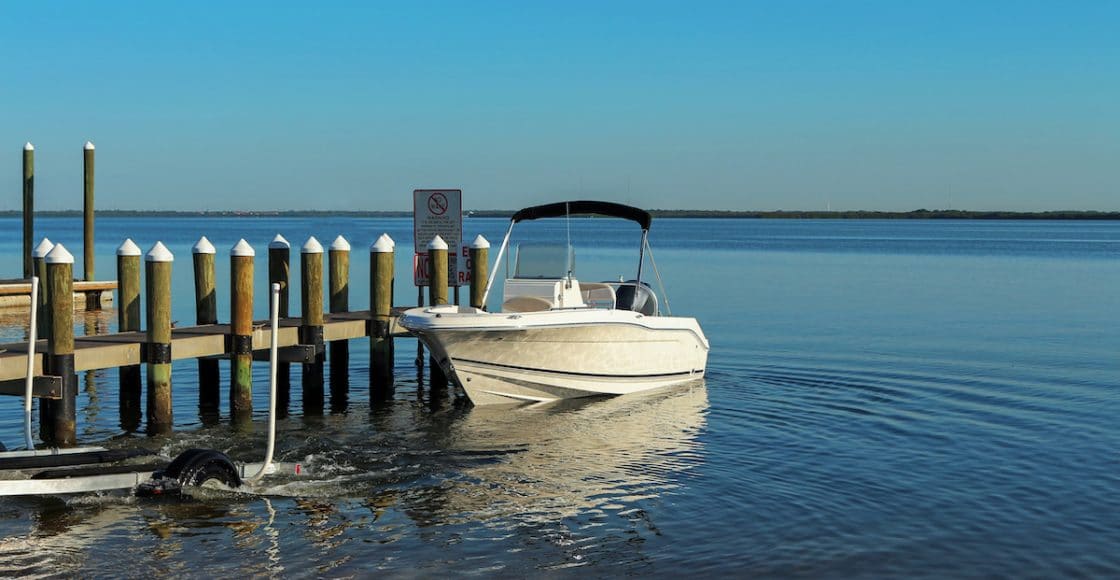
Pre-Departure Boating Checklist: 20 Things to Do Before Leaving the Dock

Table of Contents
Last Updated on June 22, 2022 by Boatsetter Team
Ever have that feeling you’ve forgotten something? Take a cue from airplane pilots and make a pre-departure boating checklist for your boat and it could prevent a significant inconvenience or safety issue.
We’ve created this sample boating checklist you can use prior to launching or leaving the dock. Our boating pros also recommend that you create your own unique checklist that matches your boat and your typical boating experience, then print it up, laminate it and get in the habit of checking the list before your shove off the dock.
Also, be sure to explore the Boat Safety Equipment Checklist to ensure you have the proper equipment onboard .
Ready to Go Boating? Browse Available Boat Rentals Near You
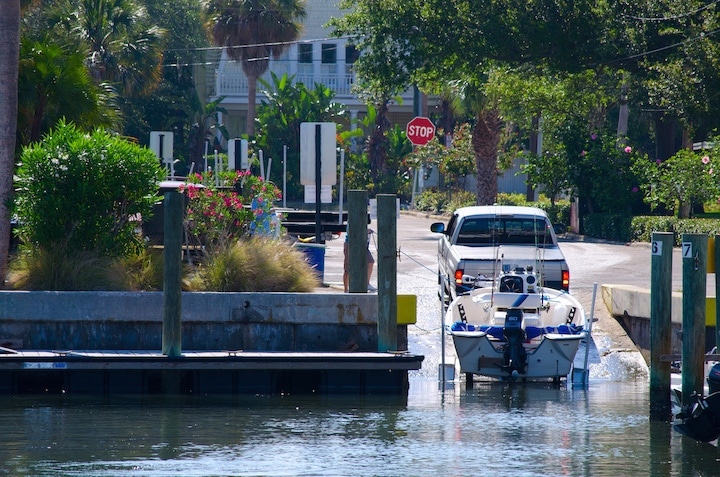
Boating Checklist: Before You Launch
If you trailer your boat or keep it on a boat lift, check these items before you launch the boat:
- Check the weather forecast
- Leave a float plan with someone on shore – including where you’re headed and when you expect to return
- Ensure the drain plug is securely and properly installed
- Check engine oil level
- Check battery connections
- Bump the ignition switch or key to make sure the battery is not dead
- Check the fuel system for leaks – give the bilge a “sniff test”
Own a Boat? Earn an Average of $20K/season by Renting it Out on Boatsetter
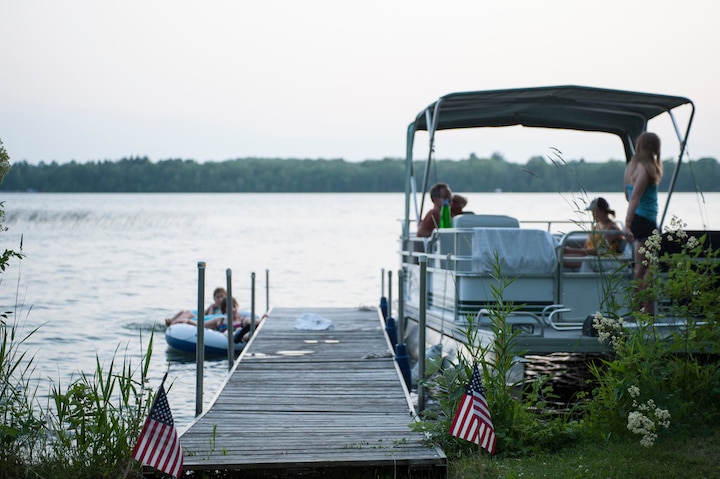
Before You Depart the Dock
After you launch the boat but before you leave the dock, check these items:
- Everyone on board is wearing a life jacket
- Check fire extinguisher charge indicator
- Activate electronic MOB (man overboard) devices if you use them
- Test VHF radio
- Test navigation electronics
- Test navigation lights
- Test the bilge pump
- Test the horn
- Check your fuel level – use the rule of thirds: 1/3 for the trip out, 1/3 for the trip home, 1/3 in reserve
- Run the bilge blower (inboard boats) for two or three minutes before starting the engine
- Make sure steering and throttle/shift controls are operating smoothly
- Attach the ECOS (Engine Cut Off Switch, or “kill switch”) lanyard to your belt or PFD
Every boat is different, so having a boating checklist that perfectly fits your lifestyle on the water is crucial. New boat owners should also take time to read our First-Time Boat Owner Checklist , for tips and tricks for success on operating, maintenance, storage, insurance, and more.
Learn How to Offset the Cost of Boat Ownership by Listing Your Boat with Boatsetter

Charles Plueddeman is a self-employed writer and photographer based in Wisconsin. A staff editor and contributor to Boating Magazine since 1986, he is the author of its “Off My Dock” column. In the marine realm he specializes in engine technology and trailerable boats. His editorial work has appeared in many national publications, including Popular Mechanics, Men’s Journal, Playboy, Popular Science, Cycle World, and Harley-Davidson Enthuisast .
Browse by experience

Explore articles

2022 Holiday Lighted Boat Parade Schedule

Understanding Tides as a Boatsetter

Lake Fork (Dallas, TX) Fishing Guide

How to Get a Boat Loan
- Pontoon Boats
- Personal Watercraft
- nauticalknowhow
- Nautical Knots
- Tools and Calculators
PRE-DEPARTURE CHECK LIST
Heading out on the water should be fun. Whether you are going to take your vessel out for fishing or just to sail. Make a pre-departure checklist part of your boating trip routine. It doesn’t need to take a lot of time. Doing so can save a lot of hassle, however.
Going over a pre-departure checklist for your boat is being a responsible boat owner. This ensures you are up to date on all safety equipment. If something bad happens, it can also aid in rescue. The U.S. Coast Guard can work a lot more efficiently if they have an idea of what your boat is like. That includes gear on board.
Let’s check out the basics of a boat departure checklist. Use this or one like it every time you head out. You’ll never be caught by surprise if you are always prepared. This way you will not overlook important items. Things like ventilation and battery care. Make sure someone else on shore has access to this info.
Safety Equipment
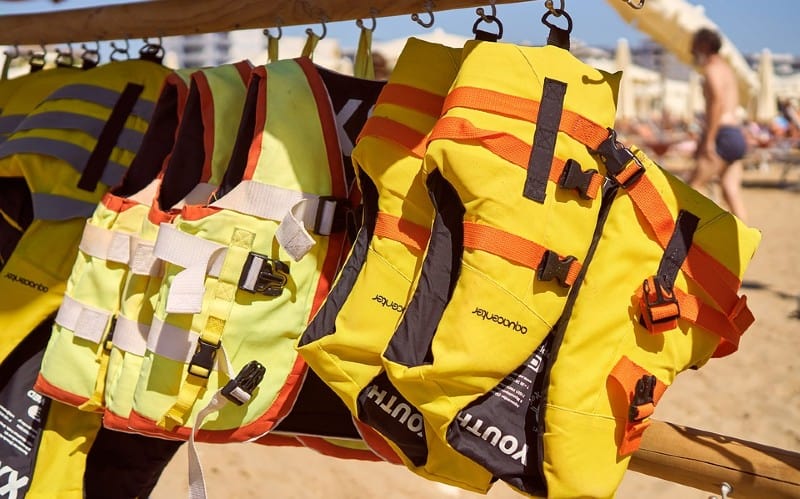
- Ensure you have life jackets and personal flotation devices in good condition.
- You must have at least one Coast Guard approved PFD on board per passenger.
- A minimum of two personal flotation devices are required.
- You may require a throwable flotation device. This applies if your vessel is over 16 feet in length.
- Ensure all crew and passengers know where to find this safety equipment. Make sure they all know how to wear and use life jackets.
- Make sure life jackets are usable. They need to fit those on board to be useful.
Boat Condition
- Perform a quick visual inspection of the hull . Look for any cracks or damage.
- Make sure controls are operable. This includes steering and throttle.
- Make sure propulsion and cooling are in good working order.
- Drain any water from the engine compartment. Ensure drainage plugs are in place.
- Check for proper weight distribution. Make sure passengers know to spread their weight evenly on board.
Navigation Lights and Shapes
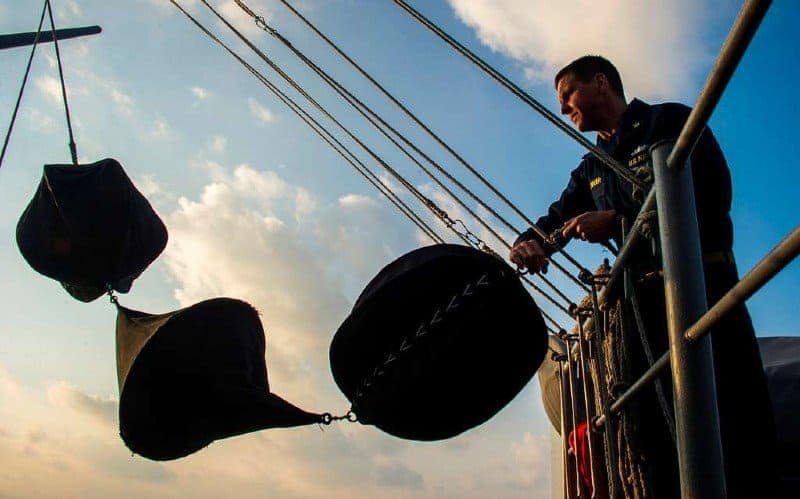
- Navigation lights and shapes such as day shapes must be on board and in good working order.
- Test all navigation lights to ensure proper function.
- Check instrument lights for proper function.
- Ensure day shapes are on board if you are going to do anything that requires them.
- Have an emergency flashlight on board if case power fails.
Sound Producing Devices
- This includes an air horn or whistle, as well as bells and gongs. You must have two sound-producing devices on board.
- Your horn or whistle must be able to produce a prolonged 4 to 6 second blast. It must be able to be heard at least ½ mile away.
- Keep a spare can of air if you are using a portable air horn
Electronics
- Check your electronics to make sure they are all in working order. This includes:
- Any other devices as applicable.
Emergency and Distress Signals
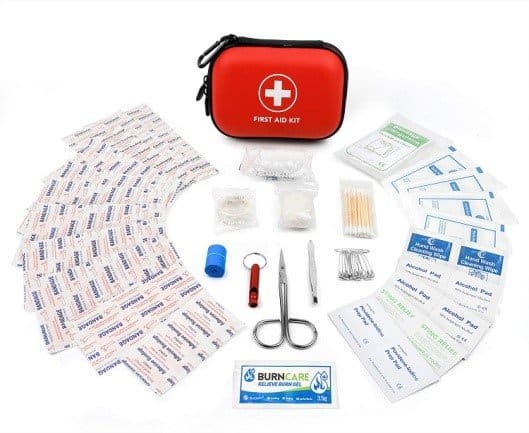
Emergencies can take many forms. Ensure you have the following on board, These will help you manage most incidents in a pinch.
- A fire extinguisher that is in good working order. Always check the date at which it was last serviced. Make sure it is a Coast Guard approved fire extinguisher.
- Emergency flares. Make sure these are stored somewhere dry. Also ensure all passengers know where they are and how to use them.
- Day signals to indicate distress. Even if the Coast Guard does not require your vessel to carry these, it’s a good idea. An orange flag with a black square and black circle indicate distress. It should be visible from the air. A square flag with a ball also indicates distress. Finally, distress flags N and C also indicate distress.
- Make sure the crew or passengers know what to do in a man overboard situation. Point out the MOB button if you have one.
- Emergency propulsion. If your engine fails, you may need alternate propulsion. Depending on your boat this could be oars or sails. If applicable, make sure you have access to them and they work.
- A mirror . In extreme circumstances, a mirror can be used as a signaling device.
- Scissors to cut tape and bandages. It may be needed to cut clothing if someone falls overboard and needs to be warmed up.
- Elastic bandages for covering wounds
- Triangle bandages for arm and shoulder injuries
- Adhesive bandages for smaller cuts and wounds
- Absorbent pads to cover wounds
- Rolled gauze to wrap wounds and hold pads in place
- Safety pins to secure bandages
- Tape to secure bandages
- Saline solution to flush out wounds
- Gloves to prevent contact with open wounds
- A splint to immobilize breaks
- Foil blanket for keep injured passengers warm
- Alcohol wipes for cleaning hands and wounds
- Common medications like Tylenol or Ibuprofen
Fuel and Fluids
- Always ensure fuel is topped up before departing.
- Check coolant levels before departing.
- Check engine oil before departing.
- Make sure you have adequate fuel on board to handle your entire trip.
- Ensure spare fuel is stored safely and securely. Keep it away from any potential source of open flame or spark.
Ventilation
- Ensure all interior spaces have functional ventilation. This is especially important if you do any cooking. If you use LPG – liquid petroleum gas – for cooking or heat, you must have proper ventilation.
- Run the ventilation blower for several minutes before starting the engine. This helps dissipate built up fumes.
- Check again afterwards. If you still notice fuel smells, you may need to delay your trip to source the problem. You likely have a leak or some kind of spill.
- Keep a tool box handy on board. Include basic tools needed to access or repair vital components of the vessel.
- Include spares of integral parts. This includes through hull plugs, air filters, and light bulbs. Also fuel filters and spark plugs. Anything easily replaced by yourself on the water.

- Inspect the bilges before heading out. Make sure they are reasonably dry and working properly.
- Make sure the pump is in good working order.
- If need be, clean any spilled oil or other waste in the bilge to prevent pollution.
Battery Care
- Make sure your battery is fully charged before departing.
- If you have a dual charging system, check the selector switch. You need to make sure it’s in the right position.
- Ensure power is on to the whole vessel.
- Make sure you have spare batteries for portable electronics. This includes flashlights, radio, and nav equipment.
- Make sure any rechargeable batteries are charged.
Docking and Anchoring
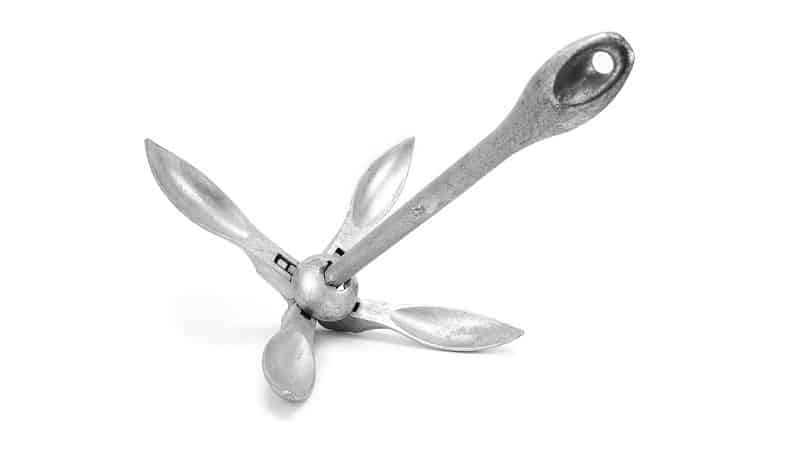
- Make sure you have at least one anchor on board. It should be attached to your anchor line.
- Check all additional lines. You should have at least three spare dock lines.
- Inspect the anchor line and dock line. Look for any chafe or signs of damage.
- Keep at least two fenders on board for docking. This is also in case you need to be towed.
Navigation Aids
- Have paper charts on hand in case of electronic failure. Familiarize yourself with any potential hazard on or near your route.
- Keep a compass on board. This will be useful of GPS is no longer functional.
Check the Weather Forecast
- Have you done a weather check before heading out? Get the local forecast before heading out to avoid potential surprises.
- Check the weather forecast for your place of departure as well as your destination.
- Adjust your trip as necessary to avoid dangerous weather. Limited visibility can be dangerous . As can fog and rain.
- Make sure your radio is able to receive weather updates.
- Ensure all crew or passengers know what to do in bad weather.
Documentation
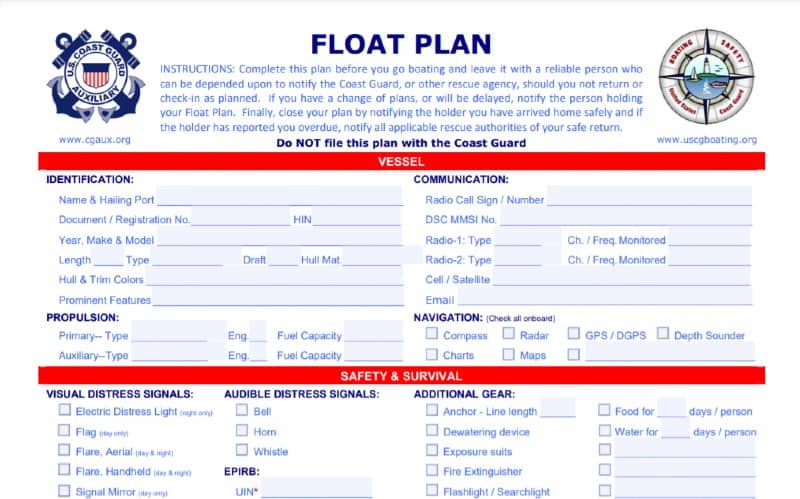
Check to ensure you have all of the relevant documents on board the vessel. The U.S. Coast Guard may ask you for some of this. Always have it safe and secure on board. This includes:
- Radio license
- Fishing permit
- Boat registration
- Paper charts
- Boater education card
Leave a copy of your pre departure checklist and float plan on shore. Ideally with family or a trusted friend. These can be provided to the U.S. Coast Guard in case of an emergency.
Make sure your float plan is detailed. The Coast Guard can use this to find you if anything goes wrong. It will greatly reduce the search area for them. That can save valuable time.
Things to Remember
The pre departure checklist seems daunting but don’t feel overwhelmed. Many of these items are quick and easy to check off. A visual inspection of your whole boat will cover most items. Even though some are easy and just require a moment of your time doesn’t mean you can ignore them. Making sure all of the checklist is done can be the difference between getting home safely and not.
Boating trips can be relaxing and fun. It should be. Whether just a pleasure cruise or fishing or anything else. But it also comes with responsibilities. Take care of the serious business first, then you can enjoy the fun parts afterwards.
My grandfather first took me fishing when I was too young to actually hold up a rod on my own. As an avid camper, hiker, and nature enthusiast I'm always looking for a new adventure.
Categories : Boats , nauticalknowhow
Leave a Reply Cancel reply
Your email address will not be published. Required fields are marked *
Save my name, email, and website in this browser for the next time I comment.
More in Boats

What Is A Gunwale?

131 of the Best Hawaiian Boat Names

167 Patriotic Boat Names

The 138 Best Boat Names for Dog Lovers

The People’s Poncho Review and Ratings

Oru Lake Kayak Review

About Boatsafe
Established in 1998, BoatSafe is your independent guide into the world of boating, fishing, and watersports. We provide expert insights and detailed guides to help you find products tailored to your needs and budget.
Contact Boatsafe
- Address: 4021 West Walnut Street. Rogers, AR 72756
- Phone: (479)339-4795
- Email: [email protected]
Site Navigation
- How We Test
- Corrections Policy
- Privacy Policy
- Terms & Conditions
- Editorial Policy
- Affiliate Disclosure
Our Reviews

All content is © Copyright 2024. All rights reserved.
Your source for the latest news on yachts, boats and more. Read through our articles to find out how to compare boats and find the right fit for you!
Your Pre-Departure Boat Checklist For Safe Sailing
Dec 14, 2023
less than a min
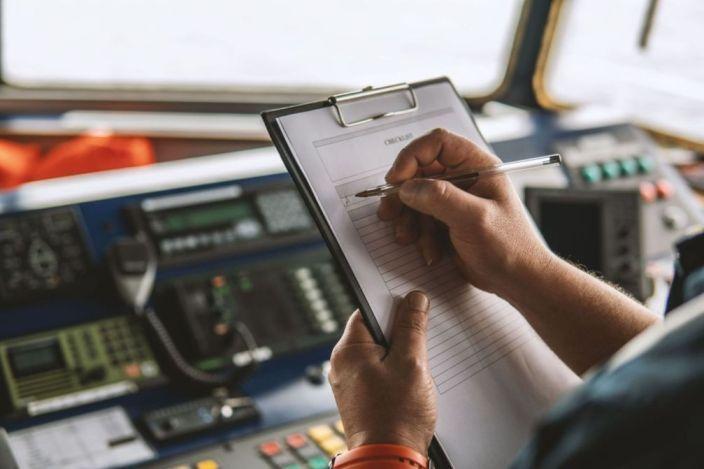
The Importance of a Pre-Departure Checklist
When preparing for a voyage, whether it's an off-the-grid cruise or a recreational sailing excursion, a thorough pre-departure boat checklist is a must. It's about more than just setting sail and hoping for the best; it's about ensuring your boat's integrity, safeguarding your safety, and promoting a smooth, carefree journey.
Fuel Supply
The heart of your boat's operation is its fuel supply, ensuring it is clean and abundant is the cornerstone of any departure checklist. Fuel quality can significantly influence your boat's performance. A clean fuel supply ensures a smooth ride, free from the annoying interruptions that could arise from contaminated fuel.
Battery System
But a clean fuel supply isn't enough on its own. You must maintain your engine cranking battery and circuit in peak condition. Much like the heart's relationship with the body, the battery system is the lifeblood of your vessel. A well-maintained battery guarantees uninterrupted power, lighting up your route even when sailing through the dark stillness of the night.
Upgrading Your House Electrical System
Now, think about going off-the-grid; you need a robust house electrical system. Upgrading it isn't merely a fancy addition; it's a crucial factor for independent, off-shore cruising. It helps preserve your communication, navigational tools, lighting, and so much more.
Water Entry Prevention
However, the 'techy' stuff isn't everything. Even the most technologically advanced boat is helpless in the face of water entry. Making sure all potential water entry points are closed up, including reinforcing windows and portlights as necessary, is a simple, effective way to keep the interiors dry and safe.
Inspecting and exercising all through-hulls, seacocks, and attached hoses is an essential part of any pre-departure checklist. This simple routine ensures your boat's 'plumbing' is functioning correctly and helps avoid any unpleasant surprises while you're out on the water.
Bilge System: Keeping Your Boat Dry and Safe
A clean and well-functioning bilge system is another critical checkpoint. Clean bilges not only help maintain a pleasant environment on the boat but are also vital for keeping water out. Make sure your bilge pumps are in good working order, and considering a damage control pump could be a wise decision for those long off-the-grid journeys.
Navigational Electronics
Finally, navigational electronics are your eyes and ears in the vast expanse of the sea. Ensure they are fully protected from the weather and water ingress; they are your lifelines when sailing into the unknown. Always remember to carry backups, because when it comes to navigation, one can never be too careful.
Remember, your boat is more than just a vehicle; it's your home on the water. So, take the time to double-check everything, and don't forget to service your safety gear and make it easily accessible. Every voyage is an adventure, and with a comprehensive pre-departure checklist in hand, you're setting yourself up for a safe, enjoyable journey.
For a more comprehensive guide, don't miss our detailed Pre-Departure Boat Checklist . It includes everything you need to check, from fuel supply and batteries to navigational electronics and more, ensuring you are perfectly prepared for your next sailing adventure.
To make your boat maintenance even simpler and more efficient, try out TheBoatApp . Our intuitive tool assists you in maintaining your boat with ease, so you can spend more time enjoying the waves.
You might like these too

How to manage your boat tasks more efficiently using TheBoatApp lg ...
Aug 23, 2022
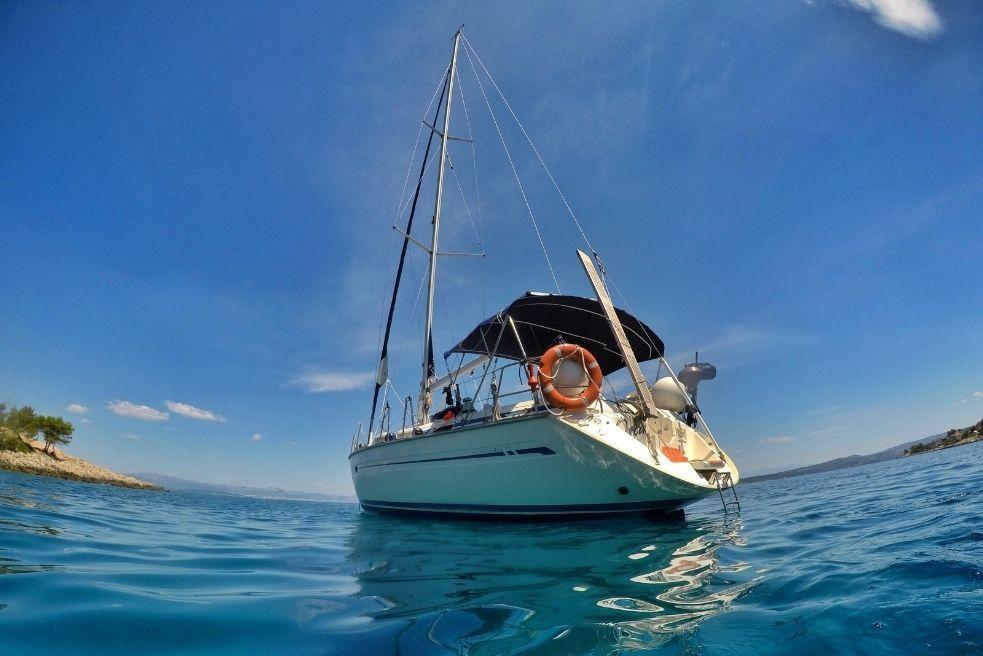
Annual Boat Service and Maintenance Average Costs lg ...
Aug 24, 2021
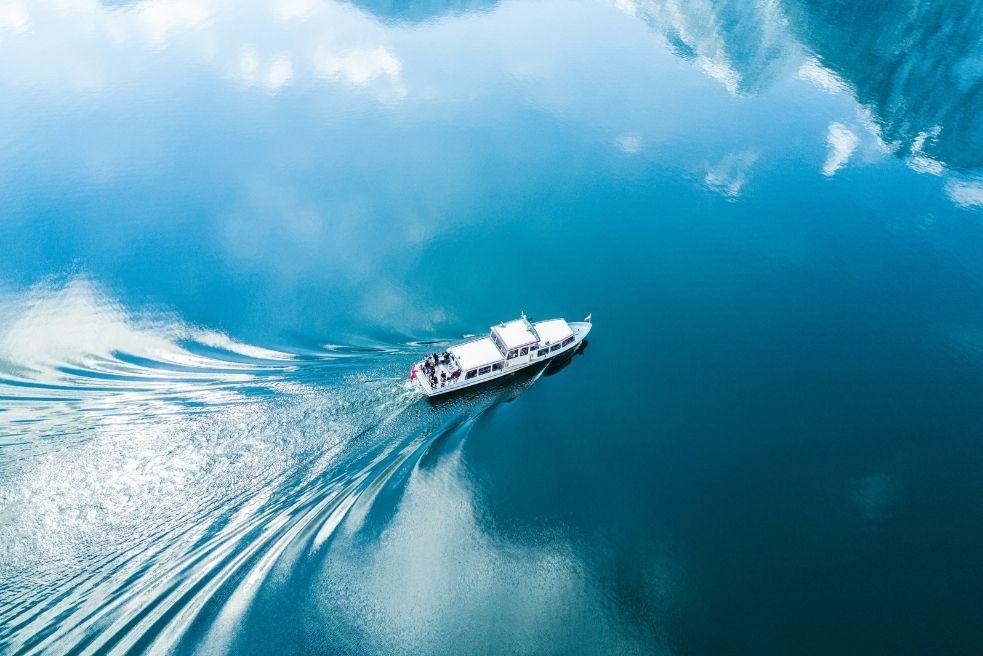
Boat Steering Troubleshooting Tips lg ...
Jul 05, 2021

Why use a sailboat management app lg ...
Nov 18, 2020
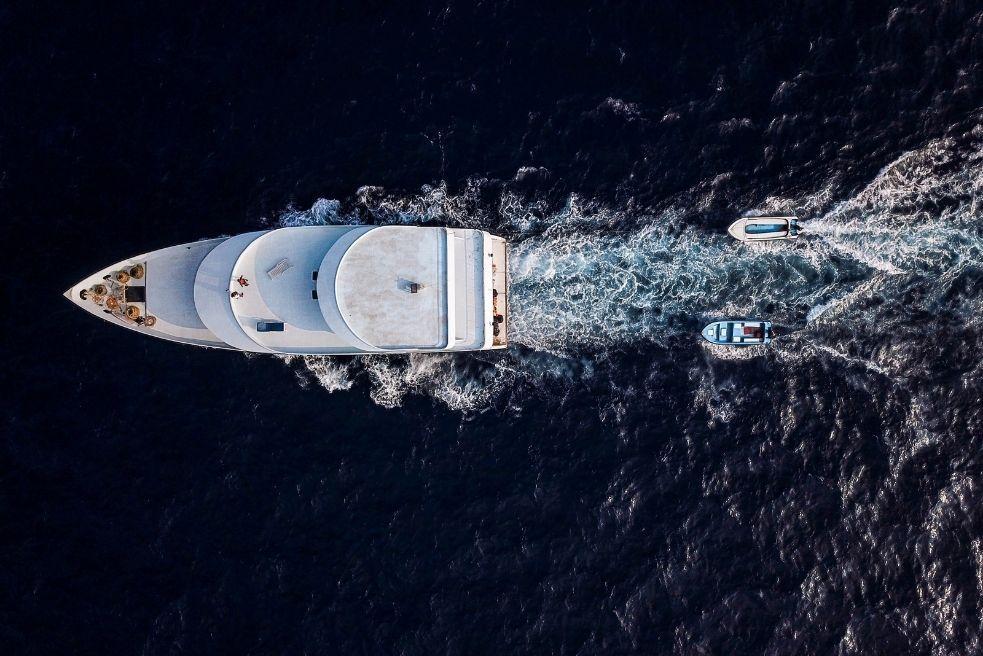
Boat sharing software effect on boat management lg ...
Nov 03, 2020


Why do you need to use a boat inspection software lg ...
Oct 13, 2020
Common Questions of First-Time Boat Buyers
What type of boat should i get.
This is the most common question. The answer is individualized, and requires answering some other questions. For instance, how many people will the buyer be boating with? The boat must have that capacity.
Next, is there an activity that takes precedence for the buyer over others, such as fishing or wakesurfing? Most boats can serve multiple roles in a pinch, but a real enthusiast will want a boat designed to help them make the most of their primary activity.
Next, ask yourself whether you will need to sleep aboard the boat? Not everyone wants a cabin, and with no living space, room on deck is maximized. Of course, some boaters like a respite from hot sun, cold or damp, and for them, shelter might be welcome, even if sleeping aboard never occurs.
Ask yourself whether you will be trailering the boat? For one thing, the boat selected must not exceed the trailering capacity of your car or truck. Does the boat need to fit in a garage? How long is it on the trailer? How high?
Selecting the right type of boat takes some soul searching and, preferably, some time spent aboard friends’ boats or rental boats to help narrow down the features wanted.
Boat Selector
Should I Buy New or Pre-owned?
Both have merit. If you buy a new boat, you will pay more. With a new boat, you should be able to rely on the dealer’s reputation (do get good referrals — picking the dealer is important ) and the manufacturer’s warranty for peace of mind and service. You will generally be able to finance a new boat for a lower rate and, perhaps, with a lower down payment. A new boat provides the most modern systems. It’s hard to beat the "bragging rights" and pride in ownership of a brand new boat.
Used boats can be had for less money than new boats. Many used boats might still come with a remnant warranty from the manufacturer and, if purchased from a dealership, might come with a 30-90 warranty (varies by locality). In any event, we recommend you hire a licensed marine surveyor to conduct a pre-purchase survey of any used boat you are considering. Add this cost — which might range from $500 to $1,500 — to the cost of the boat.
Used boats do not have the latest upgrades, though many have been refitted with new systems and motors. Used boats generally suffer less from depreciation compared with new boats. Used-boat financing usually requires higher rates, bigger down payments and shorter terms.
When comparing new and used boats, one is not better than the other, but each offers benefits that the other does not. It’s up to you to decide in which camp you are more comfortable.
Buying a New Boat
Buying a Pre-Owned Boat
Where Should I Buy a Boat?
If you are buying a used boat, you will buy it where you find it — whether that is at a dealer’s yard, on a listing at a boat show, or in the driveway of your neighbor. If you are buying a new boat, you will look in some specific places.
The first place to check out is the local dealer’s showroom. Your local dealer can service your boat and motor and, honestly, is going to be at least as responsible for your happiness as a boater as they are for the actual boat itself. Look for “ demo days” and “owner rendezvous” events that you can attend to ride on some boats, meet with other boaters, and develop a rapport with your local dealer.
Another great place to buy a boat is at a boat show. At the show, you can climb aboard the two or three boats that make up your “short list” and compare the features directly. You can also get quotes from the competing manufacturers for the boat sale, as well as other desired services such as storage, dockage or winterization. Boat shows are also a great place to shop for financing: Make the banks earn your business. Finally, many boat- and engine-makers offer incentives for making the purchase at the show (though many of these can be had at the dealership if one is firm in asking).
Finding the Right Dealer
Shopping Guide
How Much Do Boats Cost?
Boat costs range from under $10,000 for a new small fishing boat or PWC to millions of dollars. Perhaps more useful is that, according to the latest data from NMMA, the average price of a brand new powerboat hovers at about $40,000. For some, this seems high, but experienced boaters might ask that these folks consider the following before dismissing boating as expensive.
Boating is commitment in time as well as money, like other recreational activities. Few of those provide the return that boating does. For example, a boat allows a family to go fishing, participate in watersports, cruise to interesting places, and see and do things together that the land-bound cannot. Boat owners always have a weekend getaway on tap.
Boating is also an investment in the ties that bind. It’s harder to get a more “captive” audience with family and friends than taking them out on the boat. The bonds that come from learning new skills together, experiencing new things together, and just being in a different environment together are tough to beat.
No bones about it: It costs money to go boating, as it costs money to do many other activities. The benefits, though, as millions of boaters will attest, are unique and just plain tough to beat.
Affordability
What Are the Additional Costs of Boating?
In addition to the price of the boat, other costs will be required to go boating. Naturally the cost of water skis, fishing rods and fuel is expected. Some others costs will apply to all boaters; other costs will apply to only some boaters. Check this list against your personal situation. (Values are representative, vary by region, and not meant to be actual quotes.)
- Annual state boat registration: $75
- Annual trailer registration: $75
- Boat trailer purchase: $1,800-$7,500
- Trailer ramp fee: $200 per year
- Dockage: $100-$200 per foot per year
- Insurance: $250-$2,000 per year
- Boat winter storage (shrinkwrap; outdoor storage): $35-$60 per foot
- Boat winterization (one head, two sinks, two washdowns, one generator, AC): $1,200
- Engine winterization (outboard): $550
- Engine winterization (inboard/sterndrive V-8): $650
- Engine winterization (diesel): $750
- Service sterndrive (pull drive, bellows): $450
- Safety equipment (three flares, horn or whistle, four life jackets, etc.): $350
Learning the Ropes
Do i need a license.
In 41 U.S. States and Canada, yes you need a license, or at least some formal education. In many instances, you can be "grandfathered in" if you are of a certain age and can prove you completed a boater-safety course in the past. If not, you must take a boater-safety course. These are offered in a variety of settings, including online, by organizations such as the United States Coast Guard Auxiliary and the United States Power Squadrons .
In many cases, completion of a boater-safety course can result in discounted boat insurance.
How Do I Learn to Drive a Boat?
Experience. New boaters need to start off slowly and expand their range of operation as they gain experience. Operating a boat is very little like operating a car.
For example, there are no painted lines on the water, and buoys serve a different purpose than traffic signals. But, by attending a boater-safety course, boaters can gain understanding of navigation aids.
Then there is the water. The height under bridges and overpasses changes constantly with the stage of the tide — sometimes you can fit under and other times you cannot. This type of knowledge is localized, and learned best by boaters who go out slowly at first, increasing their range of boating over time.
The surface of the water is bumpy and can change from hour to hour; this too takes some time on the water to predict. But, with time, boaters come to understand how much wind, and from what direction, affects their waterway adversely.
There are charts published and inexpensive marine electronics that show the depth of water one is operating in and any hazards, such as underwater rocks, stumps, shell banks and sandbars. It’s prudent for boaters to purchase and understand the use of charts and marine electronics.
Current and wind can confound new boaters who are not prepared for them, especially while docking. But those boaters who proactively seek out knowledge of these forces and practice maneuvering can catch on quite readily. Operating a boat requires the gaining of experience — but that experience comes from going boating, so it’s all good!
Truly motivated boaters jump-start their learning. There are good books on the subject of boat handling, and many expert magazine articles, such as the monthly Seamanship column in Boating magazine, that one can refer to.
As you would expect, taking a boater-safety course is a great idea and will up your safety and enjoyment of all aspects of boating. Professional captains can also be hired, if one desires, and there are many schools that teach boat handling on the water. Needless to say, nothing beats the firsthand learning gained by taking the helm!
Boating School
Where Do I Store My Boat?
Many boaters store their boat on their own property. If they own a trailer, the trailer serves as the storage bed. If there is no trailer, a hauling service can be hired to place a boat on blocks and stands on your property in fall, and then retrieve and relaunch the boat in spring.
Some trailer boaters rent yard space from storage facilities, RV parks and service stations. In some locales, vacant lots can serve for a fee. Security and convenience of these options varies.
If you cannot utilize your own property for storage, then you can seek out a marina or boatyard. Options here range from "wet storage," which means in a slip and ready to go at an instant to "rack stored," also called “ high and dry,” wherein the boat is stored in a building and moved to the water by forklift on request.
For winter storage (or any long-term, nonuse storage), yards and marinas offer storage inside and outside at varying rates.
What Type of Activities Can I Do Aboard My Boat?
There are the obvious activities such as wakeboarding, fishing, tubing and cruising (which in this context means spending one or more nights aboard your boat with family or friends.)
But there are loads of ways to enjoy your boat that might not be obvious to a beginner. For instance, boaters often pack some food and drink to spend an afternoon slowly touring the coastline of some lake, cove or bay, enjoying the scenery and checking out the houses, and spending time with family and friends. Other times, a boat is a great way to go out and view fireworks . Still other boaters enjoy going to big-city waterfronts, visiting sporting events by boat , going out to eat by boat , or enjoying concerts by boat .
If you stick around boating, you’ll hear the term “rafting-up.” This refers to an activity in which a bunch of boaters gather and anchor or tie up beside one another, often at a scenic cove (aka “party cove”) or sandbar to simply socialize. Raft-ups include visiting other boats, swimming, kayaking, enjoying music and more.
http://www.boatingmag.com/how-to/how-to-raft-other-boats
High-performance boaters enjoy racing. Of course, there are also “poker runs,” the watery equivalent of auto rallies. In a poker run, like-minded boaters gather and cruise to some location together — perhaps for lunch — and then return. The goal is camaraderie and adventure. Everybody is a winner at poker runs .
As a platform for paddle sports, boats make a great conveyance for transporting a stand-up paddleboard or kayak to more-remote locales. Boats are, of course, great for those who’d like to dive or snorkel. If you’ve never seen the stars from miles out in the ocean, where sea and sky appear to be one, well, you just haven’t seen them!
http://www.boatingmag.com/sup-and-kayak-carrying-systems-for-boaters
What you can do aboard a boat is limitless. All you need is imagination and a desire to be outdoors. Got a boat? Just add water!
What Type of Vehicle Do I Need to Tow My Boat?
The type of vehicle you need to tow your boat will vary by the size of the boat. A small skiff or PWC may be towed by a compact car. A big diesel pickup is required to haul around a 40-foot race boat. For most boaters, an SUV or pickup truck with a V-6 or V-8 engine serves well. Boating magazine, for one, offers a “Guide to Towing,” which many find useful.
http://ford.boatingmag.com/
Of course you probably already know that a small vehicle can tow a small boat, and a big truck can tow a big boat. Many new boaters wonder about the advantages of towing. There are many.
For one, you get to cruise your boat to many more locations, whether just across town or across the country. With a trailer, a boater can cover many miles quickly on the highway and then put in at new and exciting boating locations.
Another benefit of trailering is that storage costs can be kept lower. With a trailer, boaters can bring their boats home and store them on their own property. Some trailers even boast folding tongues that allow them to more easily fit in a garage.
Of course, keeping the boat on a trailer makes corrosion much less of a worry compared with storing a boat in the water.
What Happens If My Boat Breaks Down?
What you will do if your boat breaks down can vary. If you are on a small lake or bay near a populated area, you may simply paddle the boat into shallow water, anchor it, and then wade ashore and walk to assistance. On the other hand, you might be far from land — or far from a city center — and need to call for assistance and a tow back home. But who would you call?
If you keep the boat at a marina, that might be your first call. Many marina’s provide towing — either as a courtesy or for a fee — if you will have them do the repair work. There are also nationally franchised towing services such as BoatUS and Sea Tow , both of which will come and get you, offer minor mechanical assistance (or fuel, if you ran out of gas) and towing. There are variable fees for these services, but generally, purchasing an annual plan with either service can prove most economical.
Another option is to call a friend with a boat. They might be able to come and get you. In fact most boaters understand that you cannot walk home, and will offer to help. So flag down passing boats or hail boats using the VHF radio. Chances are a good Samaritan might tow you in.
Finally, there are rescue beacons, such as EPIRBs and PLBs that can be purchased. These are to be used only in life-threatening emergencies, such as you broke down and the boat is sinking, or there is some medical urgency. (Do not use them because you are out of fuel or because you will be late for dinner.) Push the button, and the satellite-based signal will call in the authorities.
http://www.boatingmag.com/top-10-reasons-boats-break-down-0
Related Articles
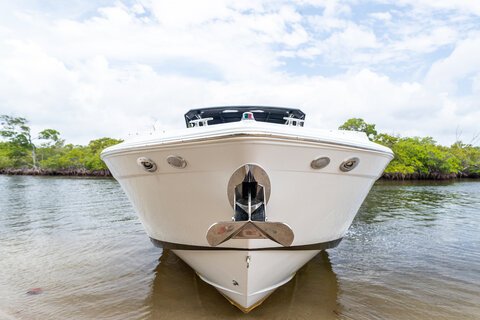
Marine Surveys and Surveyors
Even if you think you know everything about boats, you still need a marine survey. A marine surveyor assesses both the structural condition and value of a used boat, and it's the nautical equivalent of a termite inspection, plumbing/electrical report, and property appraisal.
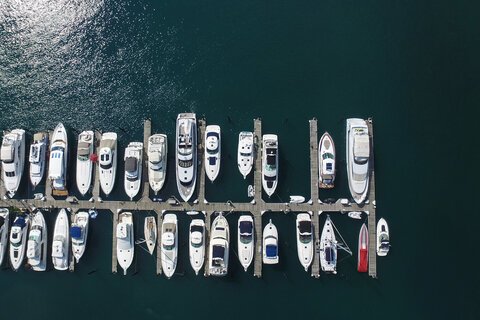
Choosing the Right Boat: Buying Guide for Recreational Boating
Deciding on the right type of boat for you and your family can be a tough decision. Luckily, there's a boat for every person and activity, as well as every budget. From pontoons to fishing boats, runabouts, speed boats, and everything in between—this guide will help you narrow down your options.
Join Our Newsletter!
Get community news, buying bargains, and how-to guides at your fingertips.
- Safety first
- News & Stories
- Download iOS
- Download Android
Pre-Departure Checklists for Boats, Personal Watercrafts (PWCs) & Non-Motorized Boats
Have you ever created your own packing list prior to leaving on a vacation or for a road trip? Or maybe you’re familiar with the process that pilots follow to complete a “pre-flight checklist” prior to take-off? This same basic concept can and should be applied to boating.
Prior to leaving the dock, or even leaving your house, you should walk-through a pre-departure checklist with your boat to ensure you have all necessary equipment onboard.
The type of vessel you own—whether that’s a powerboat, sailboat, non-motorized boat, or a personal watercraft—will help you determine which checklist you should use. Your vessel will fall into one of the following categories:
- Class A: < 16ft., Canoe, Kayak
- Class 1: 16 feet to < 26 feet
- Class 2: 26 feet to < 40 feet
- Class 3: 40 feet to < 65 feet
- Personal Watercraft (PWC): Jet Skis, WaveRunners, and Sea-Doos
Before we dive into the details for each pre-departure checklist—which are conveniently located right within your KnowWake app—it’s important to understand the benefits of using a checklist prior to launch.
Pre-Departure Checklist
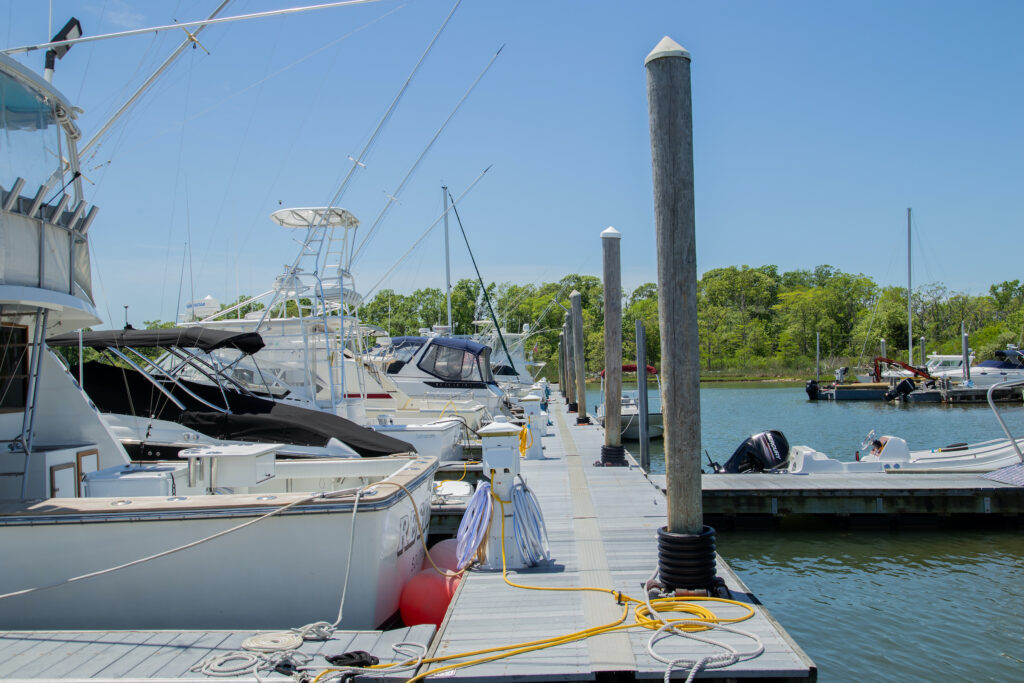
5 Reasons Why You Should Use a Boat Departure Checklist
As with a lot of things in life, it never hurts to plan ahead and plan for the unexpected. There are some items that are legally required to be on a boat as mandated by the U.S. Coast Guard (USCG), while there are other items that are highly recommended.
Regardless of whether an item is required or recommended, using a pre-departure checklist will help you in a variety of ways.
- Following a checklist will help you ensure you have all the legally required items on board in case of an emergency or if a vessel check needs to be performed by the USCG.
- You may find that there are items on the list that you didn’t know were necessary to have on a boat (i.e. distress signals, throwable floatation devices, first aid kit, registration decals, and more).
- Consistently following a checklist will help you keep your equipment up-to-date, in good condition, and will help you avoid missing an expiration date (for example, on a fire extinguisher).
- You’ll have an opportunity to check and double check that you have enough life jackets or PFDs (personal floatation devices) for each passenger onboard—and that they’re the correct size for each person.
- It will help you avoid forgetting something—duh! Whether that’s sunscreen, tow toys, life jackets, or whatever else may be on your list.
Using Boat Safety Checklists on KnowWake
Finding and using a pre-departure checklist for your boat is easy with KnowWake. Just follow these simple steps:
- Open the KnowWake app and navigate to the main menu.
- Scroll down until you see “Checklists.”
- There are two safety checklists available—one for Class A, 1, 2 and 3 vessels, and one for Personal Watercrafts. Determine which checklist is appropriate for your vessel.
- As you perform your initial walkthrough prior launch, check off each required and recommended item as you ensure they’re onboard.
- And that’s it! You’re ready to hit the water.
While you can find each of these checklists within your KnowWake app, take a look below for a preview of items that are required and recommended for each boat class.
Class A, 1, 2, and 3
- Life Jacket(s) for all passengers.
- Throwable Floatation Device (Type IV)
- Fire Extinguisher (USCG-approved B-1 type)
- Visual Distress Signal (flare)
- Sound Generation Device (whistle, horn)
- Backfire Flame Arrestor (inboard only)
- Ventilation Ducts (fuel, bilge)
- Navigation Lights
- Proper display of registration numbers, letters, decals
Recommended:
- Anchor with sufficient line
- Oars/Paddles
- First Aid Kit/Sunscreen
- EPIRB (location beacon)
Personal Watercraft (PWC)
- Life Jacket(s) for each operating passenger.
- Emergency engine cutoff lanyard (attached)
- Backfire Flame Arrestor
- Bilge pump/dewatering device
Ready to leave the dock and head into open water? Download KnowWake before you go to run through the Pre-Departure Checklist.

Blog Topics
- America's Great Loop
- Boat Ownership
- Boating Tips
- Dockside Dining & Beach Bars
- Fishing with KnowWake
- KnowWake Adventures
- News & Press
Recent Post

Data Magazine Names KnowWake on “101 Most Innovative Mapping Services Startups & Companies (U.S.)”

KnowWake Featured on Boating Industry’s “2022 Top Products” List

Taking a Boat to Mackinac Island: Best Boating Destinations Series

Boating in Newport, RI: Best Boating Destinations Series
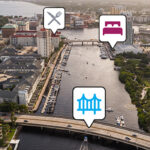
Boating in Tampa Bay: Best Boating Destinations Series
- Search for:
MyBoatCard.com® | Official Canadian Boating License

Pre-departure Checklist
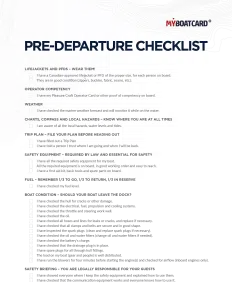
Keeping in mind that it is illegal to operate a vessel that is not seaworthy. Always give the boat a quick once-over before departing; you never know what you might find that is in need of repair until you look!
According to the Canadian Coast Guard, more than 50% of calls received by Canadian Rescue Coordination Centers are from boaters who are in trouble as a result of a mechanical failure of their boat. The most common cause of a breakdown is running out of fuel.
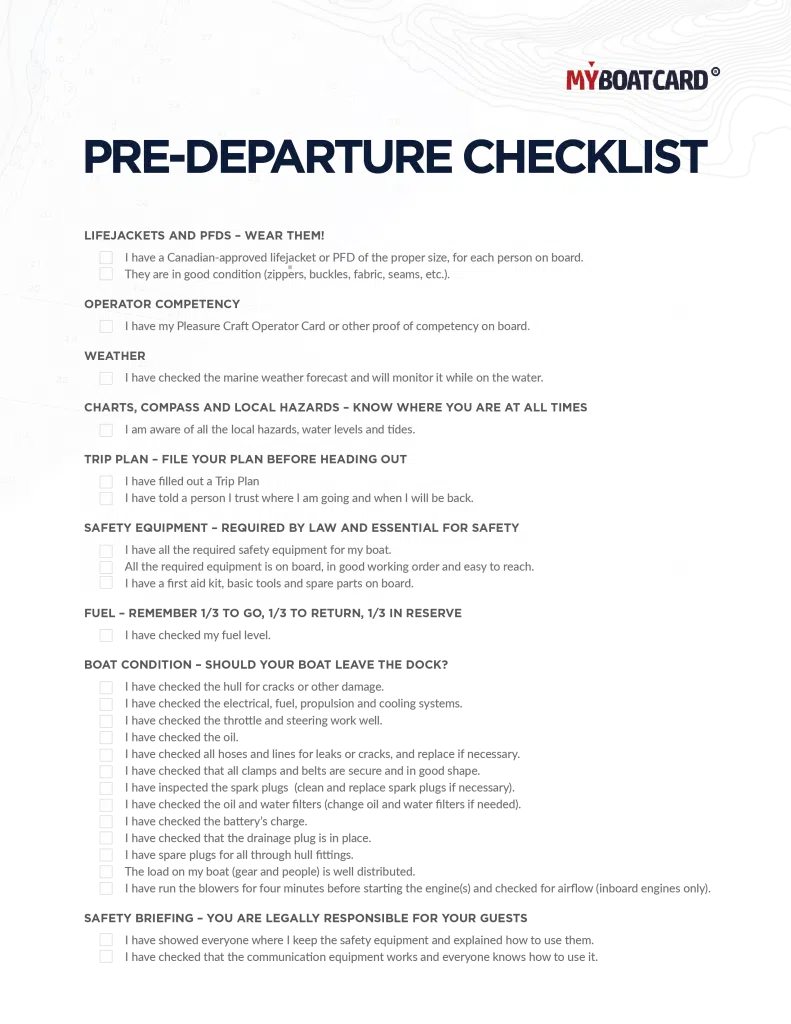
Study Guide
Your browser is out-of-date! You must upgrade to a different browser to experience this site.
All Chapters
- Boating Terminology
- Boat Hull Types & Designs
- Boat Engine Types Explained
- Boat Size Classifications
- Boat Capacity
- Hull Identification Numbers
- Boat Registration & Titling
- Life Jacket Types & Designs
- Children's Life Jacket Recommendations & Requirements
- PFD Rules & Requirements
- Life Jacket Fitting & Care Guidelines
- Inflatable PFD Types & Tip
- Boat Fire Extinguishers
- Boat Backfire Flame Arrestor
- Boat Ventilation Systems
- Boat Navigation Light Types & Requirements
- Unpowered Boat Navigation Lights
- Visual Distress Signals
- Marine Distress Signals
- Weather Conditions
- Small Craft Advisory
- Boat Maintenance Tips
- Towing & Trailering
- Launching & Retrieving
- Pre-departure Checklist
- Rendering Assistance
- Capsizing/Falls Overboard
- Cold Water Immersion
- Fire Prevention
- Running Aground Prevention
- Accident Reports
This site requires JavaScript. Your browser either doesn’t support JavaScript or you have it turned off.
For this page to function correctly, please enable JavaScript and then refresh the page.
Boat Safety Equipment Checklist
No two boating trips are the same, so you need to treat every trip seriously and always take some basic precautions before setting out.
Remember, not all boaters, or passengers, have the same experience or comfort level. With the many variables encountered on the water, it's easy for accidents to happen if precautions are overlooked.
One of the best ways to be prepared is to use a pre-departure checklist before each trip---even short trips! This type of checklist is easy to review, and it makes sure that you aren't caught unprepared. You can also use it to keep new passengers informed and comfortable.
Below is an example of what should be included on your pre-departure checklist. Download our printable PDF!
Pre-Departure Checklist
Personal flotation devices (life jackets).
- You need to have at least one U.S. Coast Guard-approved PFD onboard per passenger—and a minimum of two PFDs total. So if you're boating alone, you need two PFDs on board.
- If your boat is longer than 16 feet, you also need to have a throwable type four PFD on board.
- Make sure to tell all of your passengers where the PFDs are located.
Sound-Producing Devices
- You need at least two sound-signaling devices on board, such as an air horn, bell or whistle.
- If you are carrying an air horn, also pack a spare can of compressed air.
- Check to make sure you have all the required navigation lights and that they are working properly.
- And always carry a flashlight on board.

Distress Signals
- Make sure that passengers know where distress signals are located and how to use them. Store flares in a dry, accessible location.
Docking and Anchoring
- You need to have at least one anchor onboard, attached to the anchor line.
- You'll also need two fenders for docking
- Inspect your fenders and anchor line.
- Have a coule of spare dock lines onboard.
Documentation
- Have all of the required documentation for your planned activities, including boat registration, radio license, fishing permits and boater education card.
- Keep local charts on hand for quick reference
Fire Extinguishers
- If required, have a U.S. Coast Guard-approved fire extinguisher stored in an accessible place.
- Check that it's securely mounted and not expired.
- Inform all passengers of fire extinguisher location(s).
Tools and Spares
- Keep a basic toolbox onboard with commonly used spare parts, like a fuel filter and light bulbs.
Emergency Boat Operation
- Inform all passengers of procedures for emergencies on the water, including stormy weather.
- If you have a VHF radio, know how to use it.
- Keep a well-stocked first aid kit in an accessible location.
Fuel and Oil
- Before leaving, check that you have enough fuel for the trip and that the oil and coolant are at good levels.
Ventilation
- On powered vessels, make sure enclosed spaces are well ventilated
- Run the blower for 4 full minutes before turning on the engine.
- If fumes are present after blowing, look for a leak or spill.
Battery Care
- Check that the battery is fully charged before leaving.
- Also check that all battery powered equipment is working and pack spare batteries for important accessories like your handheld radio and flashlight.
Weather Forecast
- Always check the forecast before any trip.
- Keep a handheld radio handy so you can regularly monitor the weather.
- Make sure the bilge is dry, clear of waste, and that your bilge pump is working properly.
- File a float plan with passengers and boat information with a friend or reliable party.
Chapter 4: Emergency Preparedness


Your Essential Boat Departure Checklist

General advice before departure
Even if you're not a complete sailing beginner , it can still be good to have a checklist before you head out each time. Use our guide to help ensure you are well prepared for each outing.
Make sure you have a thorough understanding of the marine weather conditions that you’re heading out into, so you know what to expect and to help you be fully prepared. If you are sailing in a tidal area, make sure you have a good understanding of what the tide is going to do while you are out.
Let someone know you are going boating
Even if you’re doing a short day sail, make sure someone on shore knows what your plan is, and when you’re aiming to be back. It’s good practice so someone can raise the alarm if you’re not heard from within a reasonable time.

Below Deck Checklist

Close all the boat hatches
Go through the boat, front to back, and make sure each and every hatch is closed. and the hatch latches are secured. Check them all, even the ones which look closed as they may just be pushed shut or secured partially open to let in a cool breeze in. A breeze whilst stationary is lovely, a bucket load of salty water on your bunk from a wave whilst underway is definitely not lovely.
Brilliant navigational App clearly designed by people who understand what boaters really need. The passage planning is superb taking account of the predicted wind and tide at your proposed time of departure advising you whether wind and tide are in your favour. One navigational app that does it all.
Ross Lucas-Young
Secure everything that moves in the boat
Stow everything which could move around whilst sailing, or obstruct your crew when they’re down below deck. Cutlery and kitchenware in draws, clothes and shoes in lockers, pilot books in the chart table, mobile phones and electronics in a safe place. It’s not only annoying to hear things clattering around, but it’s also undesirable in bigger seas to have to send someone down below to tidy up.

Check your boat radio
Make sure your boat VHF is working by doing a radio check. Usually the marina will help you with that. Make a call on their local channel and someone should reply to say they can hear you loud and clear. This is definitely one of the highest priority boating safety actions on your checklist.

Make everyone aware of where boat safety kit is stored
You’ll be carrying lifejackets and lifelines for every one of your crew, and even if they’re not using their sailing safety gear when you cast off, make sure everyone knows where it can be found, just in case.

Carry out a boat engine check
It is important to your boat's engine before every outing. The essentials to check, which can easily be remembered by the acronym WOBBLE :
- (W) Water: Check your strainer for debris, and make sure the water intake seacock is open before starting the engine
- (O) Oil: Is there enough? Top up if needed.
- (B) Belts: You should be able to turn them a quarter by hand, and if you see evidence of black dust this may indicate an issue which needs investigating.
- (B) Bilges: Hopefully it’s nice and dry, but check for excess water or oil.
- (L) Look: Have a general look over the engine to see that all hoses and wires are where they should be.
- (E) Exhaust: Once you’ve completed all the other checks it’s time to start the engine. Check that (after a few moments) there’s a nice stream of water coming from the exhaust. If after about 30/60 seconds there’s no sign, turn it off and start troubleshooting.
On Deck Checklist
Stow away anything which moves.
As with down below, make sure everything is nicely stowed away and secured. You don’t want anyone tripping and ending up injured (or even in the water!!) before you’ve left the marina.

Check your boat navigation lights are working
Although you may not intend to do any night sailing, you never know when your trip might be unexpectedly extended. Check all your boat navigation lights are in good working order.

Check the rudder on the boat
Turn the helm all the way to port, then all the way to starboard. It should feel free and unobstructed.
Check you have propulsion
There’s nothing worse than starting your exit manoeuvre only to realise you’ve got no power! With the lines still secure, pop the boat's engine in neutral and give it some revs. You should hear the engine revving up.

Prepare your sails
If your boat has traditional slab reefing then remove or unzip the sail cover and connect your halyard so you’re ready to hoist the main in an instant if required. There’s nothing worse than needing to get out of a sticky situation, for instance if your engine fails, and then having to spend valuable minutes faffing around with your main sail!
Transition dock lines to slips, and remove spring lines
If you’ve been in a marina for a while, you may have tied bowlines around the pontoon cleats or have springs attached to counteract swell from passing boats. Turn these into slips so you can easily cast off from the boat. Even if helpful bystanders offer to untie lines, politely decline. You need to be in full control from the boat. Spring lines (those which prevent the boat from moving backwards and forwards) can also be removed, but a word of caution though. Do check where the wind is coming from, and how your boat might behave in the absence of those lines. Last thing you want is to end up sitting uncomfortably close to the pontoon.

Have a sailing departure plan
Leaving sounds easier than coming into a berth, but often it’s just as challenging. You need to plan ahead and consider what the boat will do as you start to loosen off your dock lines. The wind conditions will dictate which lines can go first, and which need to wait until last. Brief your crew on your plan, give each person a job and make sure everyone understands what to do and when. As you set off remember that you’ll have very little steerage until you’ve picked up a bit speed and you’ve got water running over the rudder. Always think through what you’ll do if things don’t quite go to plan, to help you cope if things go a little awry.

After departure
Use a reliable app for marine chart plotting like savvy navvy where you can plot routes with real-time wind, chart and tidal data, all in one place. You can also find great anchorage and marina information with their latest Navily integration.
Check out these routes from savvy navvy - Cape Marina to Palm Beach or Heritage Marina to Panther Key
savvy navvy , the boating app that brings all essential marine information together in one place. Featuring global charts, wind and weather forecasts, tidal graphs, GPS Tracking, automatic weather routing, and marina and anchorage information. It’s like Google Maps for boats.
Inspired to get on the water? Start your free trial today.
Latest Articles.
Boat instructor lucy mccarter imports saved navigation markers into savvy navvy to boost digital navigation in the classroom.
After many years of working as a boat instructor on the south coast of the UK Lucy McCarter has seen quite the evolution in teaching styles and tactics.
Boat Enthusiast James Anderson Imports Navigation Markers Into Savvy Navvy to Enhance Navigation at Sea
Maine Angler, Luke Fraser, Imports Markers Into Savvy Navvy to Optimise Time on the Water
Luke grew up in a small coastal town in Maine, where the Atlantic Ocean was a backdrop to his childhood. His father, a seasoned fishing enthusiast, often took young Luke out to sea, teaching him the nuances of the ocean and its sea creatures. Luke’s
About Chubb: About Chubb
About Chubb: About Chubb in the U.S.
About Chubb: Careers
About Chubb: Citizenship
About Chubb: Investors
About Chubb: News
Claims: Claims
Claims: Claims Difference
Claims: Claims Resources
Claims: Report a Claim
Login / Pay My Bill: Login for Business
Login / Pay My Bill: Login for Individuals
Login / Pay My Bill: QuickPay for Businesses
Login / Pay My Bill: QuickPay for Individuals
Login / Pay My Bill: APT for Travel Advisors
Contact Us: Contact Us
Contact Us: Global Offices

- File a claim
- Get a quote
Your essential pre-departure and boating safety checklist

Before you head out on the water for the first time this season, it’s important to make sure you and your boat are completely prepared. That’s why we’ve put together the following checklist for you to follow for a safe boating season, starting day one.
Take a safety course.
Whether you’re a new boater or a seasoned boating veteran, it’s always a good idea to brush up on boating safety. Here are a few places to find courses:
- The U.S. Coast Guard Auxiliary
- U. S. Power Squadron
- U.S. Sailing
- National Safe Boating Council
Schedule a vessel safety check.
Before you launch your boat this year, you can get a free vessel safety check from the U.S. Coast Guard Auxiliary or U.S. Power Squadron. A Vessel Examiner will inspect your vessel, make recommendations, and discuss certain safety issues to ensure you’re ready for a safe boating season. For more information, visit:
- U.S. Coast Guard Auxiliary
- U.S. Power Squadron
- Vessel Safety Check Overview (video)
Check your vessel and equipment.
Make sure your boat is safe and operating at peak efficiency before you get out on the water. You’ll want to:
- Know where important equipment is located, such as life jackets or throwable flotation devices, a horn or sound-producing device, fire extinguishers, a carbon monoxide detector, and flares or other visual distress signals.
- Make sure your boat horn can emit a four-second blast that is audible for half a mile and attach a whistle to each personal flotation device.
- Check the electrical systems and lighting equipment, including navigation lights, to make sure they’re working correctly. Bring a flashlight with extra batteries, just in case.
- Check the bilges and pump them dry if water is present.
- Make sure your boat drain plug is inserted.
- Keep a basic toolkit on board for emergencies.
- Keep an inventory of spare parts such as fuel and oil filters, spare belts, oil, and coolant.
Make sure you have enough life jackets for everyone aboard.
Check your state laws to see what’s required, and replace them when they are no longer usable. For more guidance on the different types of life jackets and PFD’s, click here .
Check the boat’s ventilation.
If you smell fuel before ventilating, run the blowers for several minutes and recheck before starting. If you still smell fuel, shut down the engine and look for the source of the leak. Make sure this is repaired before you head out on the water.
Check the weather report.
Before you depart shore, make sure the weather will cooperate with your plans. Check the weather forecast for your navigation route and destination.
Share your float plans.
It’s important that someone who’s not with you knows where you’re headed. So, share your plans with a family member, friend, or the U.S. Coast Guard.
Welcome friends and family aboard but insist they know the rules.
Make sure all guests board and exit the boat when the engines are off, and stay away from the propellers when they’re on or idling. Give each guest a floatation device and familiarize them with the boat’s operations and safety equipment. Discourage them from swimming in the marina, as stray power in the water could be an electrical shock hazard.
Keep important papers on the boat.
Make sure you have your vessel’s paperwork, radio and boating license, fishing permit, and any charts for the areas you intend to visit on board before you head out.
Carry everyday essentials.
You’ll want to keep these items on board, every time you go out:
- First-aid kit
- Extra clothing
- Hand sanitizer and masks
- Cell phone with a charger
- Rechargeable battery brick
Take these steps before you start the engine:
- Run the blower for at least four minutes, if you have one.
- If you have an outboard engine, ensure the motors are down and in a sufficient amount of water.
- For dual charging systems, check that the selector switch is in the proper position.
- Make sure the entire vessel has power.
- Check your fuel, engine oil, and coolant levels and top them off as needed.
- Check to ensure belt tension is taut.
- Ensure the raw water intake valve is in the open position.
Make sure cooling water is flowing once the engine has started.
Check your oil pressure and water temperature and attach the kill-switch lanyard, if you have one.
Pay attention at all times.
Always keep a lookout for what others on the water are doing and be respectful of buoys and other navigational aids.
Follow docking and anchoring procedures.
Be sure to have at least one anchor with plenty of rode (at least 7:1 rode to depth ratio) set up and ready for use, and bring two or three extra dock lines. Once set up, visually inspect each line for chafe or wear and replace them if necessary. Use a minimum of two fenders when docking or towing. For more assistance click here.
Tips & Resources
We help you stay ahead and informed with these helpful tips and tricks for protecting your home, car, and more.
This document is advisory in nature and is offered as a resource to be used together with your professional insurance advisors in maintaining a loss prevention program. It is an overview only and is not intended as a substitute for consultation with your insurance broker, or for legal, engineering or other professional advice. Chubb is the marketing name used to refer to subsidiaries of Chubb Limited providing insurance and related services. For a list of these subsidiaries, please visit our website at chubb.com . Insurance provided by ACE American Insurance Company and its U.S. based Chubb underwriting company affiliates. All products may not be available in all states. This communication contains product summaries only. Coverage is subject to the language of the policies as actually issued. Surplus lines insurance sold only through licensed surplus lines producers. Chubb, 202 Hall's Mill Road, Whitehouse Station, NJ 08889-1600.

Find an Agent
Speak to an independent agent about your insurance needs.

COMMENTS
If you have any boating experience, you can head to the water and start enjoying yourself without much prep work. But it also pays to be prepared - both for your safety and overall enjoyment. That's why we put together this "ultimate" checklist, which you can review before even short departures.
Pre-Departure Check List. At least one Coast Guard approved device per passenger and a minimum of 8 on board. A throwing line. Explain the location and use of all Life-Jackets to passengers and crew that may be new to the vessel. Must have a horn capable of producing a four-second blast audible for at least 1/2 mile.
June 15, 2022. Why should you, as a sailor, think you can just hop on your boat and go, when you may encounter a myriad of issues as soon as you cast off that first line and the first wave slaps against your hull on your way to that horizon? Pilots have their checklists. Astronauts have their countdown.
Follow this pre-departure boating checklist prior to leaving the dock to ensure you have the right boat safety equipment and your boat is operating properly.
Going over a pre-departure checklist for your boat is being a responsible boat owner. This ensures you are up to date on all safety equipment. If something bad happens, it can also aid in rescue. The U.S. Coast Guard can work a lot more efficiently if they have an idea of what your boat is like.
Pre-Departure Check List Equipment (make sure all are on board and in working order) Mechanical (make sure all are in working order) To Check (check all of the following before departure) Inform (all passengers should know the following) Location of Distress Equipment To Do ... Boat Safety Equipment (oars, anchors, fire extinguisher, bailer)
Updated: Sep 21, 2021. Similar to a pilot at the start of the runway will perform a pre-check before take-off, so should you perform a pre-check on your yacht before departure. The most obvious check but often overlooked, make sure the hull is solid and does not show any sign of damage or cracks.
Dec 14, 2023. less than a min. The Importance of a Pre-Departure Checklist. When preparing for a voyage, whether it's an off-the-grid cruise or a recreational sailing excursion, a thorough pre-departure boat checklist is a must.
Get boater safety tips and handy pre-departure checklists with our safe boating guide. Find rules and information about boat maintenance, docking, distress signals and more today.
Following a checklist will help you ensure you have all the legally required items on board in case of an emergency or if a vessel check needs to be performed by the USCG.
• Passenger briefing — how to start/stop & steer boat, clothing check, location of & how to use communications & emergency equiment Power boaters can avoid inconvenience and potential danger by taking a few minutes before departure to check the following: PRE-DEPARTURE CHECKLIST EMERGENCIES: VHF RADIO CHANNEL 16, PHONE *CG or 911
Pre-departure checklist for boats are important to ensure your boat is in good working order & properly equipped with all required equipment.
One of the best ways to be prepared is to use a pre-departure checklist before each trip---even short trips! This type of checklist is easy to review, and it makes sure that you aren't caught unprepared. You can also use it to keep new passengers informed and comfortable.
Boat departure checklist - Getting ready for a day on the water savvy navvy gives you a departure checklist of essential things you will need for a great trip.
There are three things that you as charter captain must know and complete before you depart the dock: a technical checkout, a chart briefing and a weather check. Not only will this information help make the vacation better, it'll keep the crew safer.
General Preparations. Make sure the weight of persons and gear is evenly distributed and balanced, keeping most of the weight low. Make sure all boat operators have a Pleasure Craft Operator Card or other proof of competency on board. Check your charts to be sure you know the locations of local hazards and the expected water levels and tides.
Sailing Pre-Departure Checklist. By Peter 10 mins read. Before you go sailing, whether it is for a short trip or a long offshore sailing passage, the skipper and crew should check that the boat is ready for sea.
What to Cover. While you'll want to develop a pre-departure brief that's tailored to your specific vessel, here are a few basic topics that should be part of any brief. Lifejackets. Don't simply point and tell where they are.
National Safe Boating Council. Schedule a vessel safety check. Before you launch your boat this year, you can get a free vessel safety check from the U.S. Coast Guard Auxiliary or U.S. Power Squadron. A Vessel Examiner will inspect your vessel, make recommendations, and discuss certain safety issues to ensure you're ready for a safe boating season.
CheCklist. quired boat equipment: PFD/liFejackets For everyone onboarD (coast Guard-approved) throwable tyPe iv Device (if boat is over 16 feet in length) Fire extinGuisher (fully charged) sounD ProDucinG Device visual Distress siGnals backFire Flame control (if the boat has an inboard en. e) naviGation liGhts Documentation (boater education card.
21 . Completing a Pre-Departure Checklist before getting underway is an excellent way to ensure that you have all of the required safety equipment on board, and that you are properly prepared for your boating trip. You should always use a Pre-Departure Checklist to ensure that your boat has the right safety equipment onboard.
Boater's Pre-Departure Checklist. Know your vessel. Before departure, always be sure your vessel is in good working condition and properly equipped for emergencies. Avoid inconvenience and potential danger by taking a few minutes to check the following: Minimum Federal Required Equipment. Yes.
Yacht. To ensure that machinery and systems in the engine room are prepared for the impending voyage, and will remain fully functional for the duration of the voyage, the Chief Engineer is to use the above checklist prior to departure.